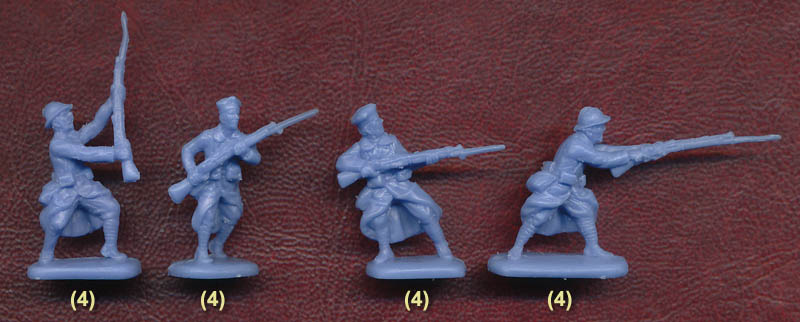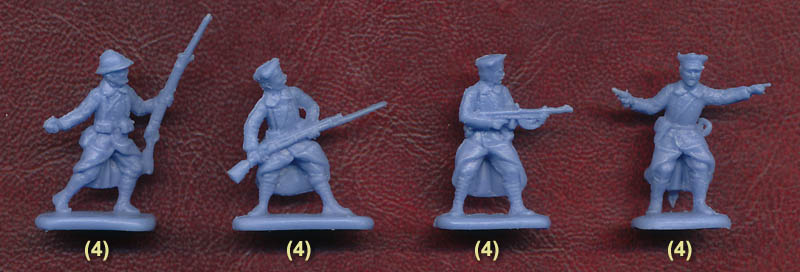
"WWI Polish Infantry (Blue Army)" Topic
4 Posts
All members in good standing are free to post here. Opinions expressed here are solely those of the posters, and have not been cleared with nor are they endorsed by The Miniatures Page.
Please use the Complaint button (!) to report problems on the forums.
For more information, see the TMP FAQ.
Back to the Early 20th Century Discussion Message Board Back to the Early 20th Century Product Reviews Message Board Back to the Plastic Figures Message Board
Areas of InterestGeneral
World War One
Featured Hobby News Article
Featured Recent Link
Featured Profile Article At last!
Featured Book Review
|
| Tango01 | 22 Jan 2018 11:51 a.m. PST |
"In June 1917 the Polish Army in France was formed from volunteers and emigrants, and was a separate army fighting by the side of that of France, which paid and supplied them. The men mostly wore the normal French light blue uniform, giving rise to the nickname of the army; the 'Blue Army', which received its other nickname, 'Haller's Army', from its leader, Gen Józef Haller de Hallenburg. They fought alongside the French on the Western Front, and after the armistice were transported to the new Polish state. This 80,000 strong force was absorbed into the fledgling Polish Army, and they soon saw action against both Ukraine and Russia in the following few months. After these victories the Blue Army disappeared, simply becoming a part of the Polish Army. As we have said, whilst serving on the Western Front these men wore mostly standard French uniforms, the one exception being the traditional soft Polish square-topped rogatywka cap. Two thirds of the poses in this set wear this most Polish of headwear, while the others wear the usual French Adrian steel helmet. The officer's version of the rogatywka is peaked while the others are not, which is correct. All have the French double-breasted greatcoat and wear puttees over short boots, and their ammunition belts are the same as worn by their French counterparts. They have the bayonet scabbard and haversack, and some have the rear ammunition pouch, but are otherwise lacking kit such as canteens and gasmask cases, which we find surprising. Once serving in Poland they kept the uniform, kit and weapons, but when the Unified Polish Army uniform regulations were published in November 1919, the Blue Army were gradually resupplied with Polish equipment (such as the M1919 greatcoat, which was single-breasted). However the French uniform was still worn by some until the end of the war with Russia, so these figures are authentic for both the advertised wars mentioned on the box…."



Full review here link Amicalement
Armand |
| Dynaman8789 | 22 Jan 2018 12:12 p.m. PST |
Second from right in the middle – is he standing in a gale? |
| Tango01 | 23 Jan 2018 10:03 a.m. PST |
|
| Crazyivanov | 24 Jan 2018 5:58 p.m. PST |
Dynaman I think he's dodging a blow or reacting to a nearby explosion. |
|

